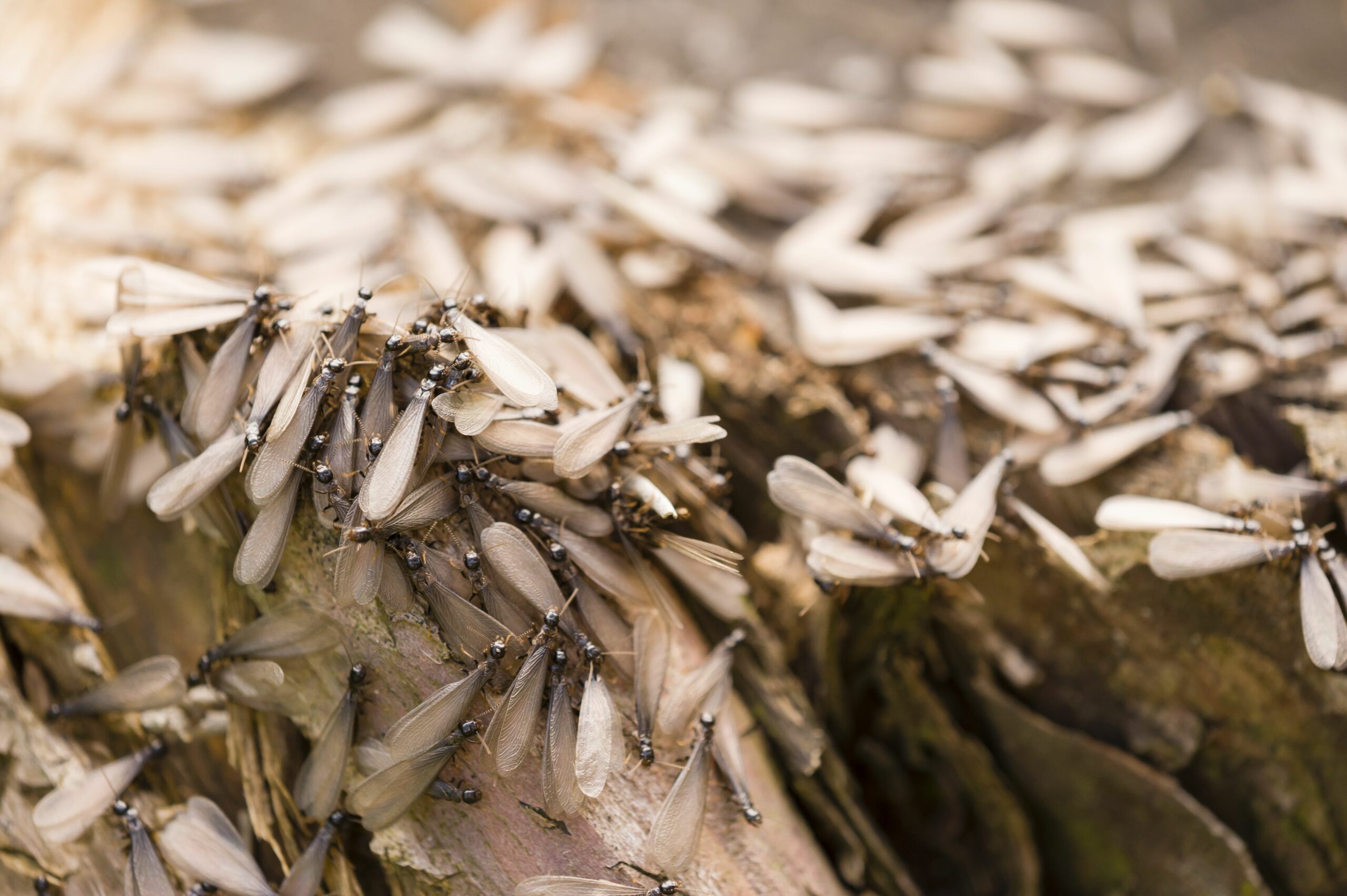
Termite Troubles
Termite swarming season will be ramping up soon as the weather starts to get warmer and the spring season approaches — with many termite species being particularly prevalent in our area. In case you’ve never heard, termites are nicknamed “silent destroyers” because of their ability to chew through wood, flooring, and wallpaper without any immediate signs of damage. In fact, termites cause more than $5 billion in property damage each year— costs that are typically not covered by homeowners’ insurance policies. That is why it’s extremely important to know what types of termite species are active and to understand ways to prevent them from causing damage to your home.
Here are four types of termite species Hopper Termite & Pest advises you to be aware of at the turn of the season if you reside in the south:
 Subterranean Termites
Subterranean Termites
This termite species is extremely common in southern states and hotter climates. Subterranean termites live in underground colonies with as many as two million members and are also found in moist, secluded areas above ground. They build distinctive tunnels, often referred to as “mud tubes,” to reach food sources and protect themselves from open air. Subterranean termites are by far the most destructive termite species — their hard, saw-toothed jaws work like shears and are able to bite off extremely small fragments of wood, one piece at a time. Over time, they can collapse a building entirely, meaning possible financial ruin for a homeowner.
Drywood Termites
Largely found coastally from South Carolina westward to Louisiana, Alabama, Arkansas and Texas, these types of termites form colonies of up to 2,500 members and primarily attack wood structures, frames, furniture and flooring, as they receive all of their nutrition from wood. Unlike other termites, dry wood termites do not require moisture from soil. They typically swarm on sunny, warm days after a sudden rise in temperature and can be difficult to treat because they have the ability to create multiple colonies within a home.
 Dampwood Termite
Dampwood Termite
Occasionally found in south and southwest states, damp wood termites are attracted to wood with high moisture content and have a preference for decaying wood, areas with leaks and woodpiles. These termites create a series of chambers in wood, which are connected by tunnels with smooth walls, as if sandpapered, and are usually found in logs, stumps, dead trees, fence posts and utility poles. Dampwood termites do not usually infest structures because of their need for excessive moisture.
 Formosan Termite
Formosan Termite
This species lives in huge underground colonies with an average of 350,000 workers and can be found in several Southeastern states, including Arkansas, North Carolina, South Carolina, Georgia, Virginia, Alabama, Florida and Tennessee. In addition to structures, they also infest trees, shrubs, utility poles, timber, railroad trusses and even boats. Formosans build intricate mud nests in the ground and can chew through wood, flooring and even wallpaper. The average formosan termite colony can consume one foot of 2X4 wood in less than a month.
Preventing and getting rid of pests are two different things. If you think your home or business has been infested with termites and/or other pests, give Hopper Termite & Pest a call today to set up a FREE PEST EVALUATION. Our trained technicians can easily tell the difference in termite damage versus damage caused by ants and other insects. Whether you are in Arkansas or Missouri, we can create a plan of action to get rid of these bugs before major damage is caused.
To learn more about termites, download the termite guide located on our homepage. Termites are not a pest that can be effectively controlled with do it yourself measures. If you live in an area prone to termites, it’s important to have regular, annual termite inspections. Contact the professionals at Hopper Termite & Pest and let us turn your termite troubles around!
